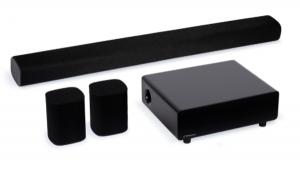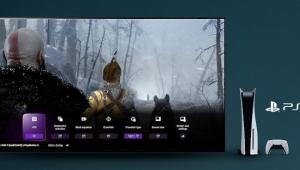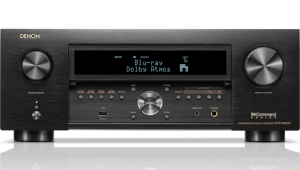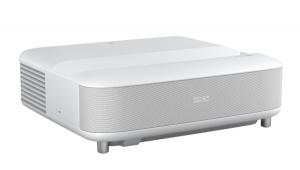Tech Trends 2013: Audio Page 4
Awesome Electronics
Digital technology, once despised, returns to the forefront
Being a generally conservative bunch, audio enthusiasts don’t reflexively embrace the latest thing. In fact, the resurgence of vinyl records and tube amplifiers proves the opposite. So it’s a little surprising to witness so many audio companies putting so much effort into digital technology of late. We’re seeing more digital amps, more preamps with features beyond the usual volume and balance controls, and more USB inputs appearing on…well, practically everything.
My prediction for most-talked-about audio product of 2013 is the new NAD D 3020 integrated amp. NAD drew inspiration for the D 3020 from the original 3020, introduced in 1980 and regarded by many audiophiles as the best budget amp ever. The D 3020’s power (30 watts per channel) and price ($399) remain modest, yet it adds new features such as a subwoofer output, remote control, and a USB input that accepts digital audio signals up to 24/96 resolution. The D 3020 is also smaller and sleeker, with an alphanumeric display that automatically reorients itself if you stand the unit on its end. The 50-watt-per-channel D 7050 ($899) ups the ante with AirPlay, Bluetooth, and Internet radio.
On the opposite end of the “do-it-all” integrated amp category is the Wadia Intuition ($7,500), which for some might recall the work of Finnish architect Eero Saarinen and for others might resemble a robot clam. The elegant unit incorporates a 350-watt-per-channel Class D amp with seven digital inputs, including HDMI and asynchronous USB. It accepts digital audio signals up to 384/24 resolution, along with DSD (Direct Stream Digital). Add speakers and a laptop, and you have an incredibly simple yet sophisticated high-end audio system.
That brings up one of the most important trends in elite audio: the spread of DSD. You may recall that DSD debuted in 1999 as part of the Super Audio CD format. SACD failed, yet audiophiles lauded it for analog-like sound. But we don’t need no discs to distribute audio no more: There are now several sites through which you can download DSD files (see dsd-guide.com for a list).
There’s also a growing number of USB DACs that support DSD, but most are quite expensive. Thanks to the new Teac UD-501, though, the price of entry for a DSD-compatible USB DAC is down to $799. The UD-501 also works with standard PCM signals up to 484/32 resolution. It’s a fully balanced design, with separate DAC chips for the positive and negative halves of the left and right audio signals (yep, that’s four separate DAC chips), plus balanced XLR outputs as well as a built-in headphone amp.
Disc-based digital audio gets about as much attention from electronics manufacturers as cathode-ray tubes do these days. But CD diehards can rejoice at the launch of a new player that is totally, entirely dedicated to their favorite format. The $4,500 Parasound CD1 doesn’t play DVDs or SACDs or Blu-rays, and doesn’t even have a digital input that lets you use it as a DAC. The player uses a CD-ROM drive controlled by a fanless computer. All data is buffered in memory and read twice. If the two reads agree, it passes. If not, the CD1 re-reads the data a little differently over and over again until it gets it right. It’s impossible to say Parasound’s efforts were successful without comparing the CD1 with another player, but the company’s CES demo sure sounded great.
Although it might seem like the industry has turned its focus back onto two-channel audio, two new state-of-the-art products ensure that surround sound won’t be slighted in 2013.
First is the Krell Foundation surround processor, which at $6,500 is expensive for a surround processor but cheap for a Krell. Besides the great industrial design and Krell-quality internal circuitry, my favorite feature of the Foundation is its automatic room correction, which uses test tones and a microphone to correct for your room’s acoustical problems. Unlike many room-correction schemes, the Foundation’s lets you limit the effect to sounds below a certain frequency, so it doesn’t affect the overall tonal character of your system and doesn’t overly change the sound.
Theta also calls its new Supernova the “Baby ’Blanca,” a reference to its revered, $20K-plus Casablanca processor. Like the Casablanca, the Supernova is available in configurations from two-channel to 11.1-channel, with pretty much whatever type of surround decoding you need. High-end features such as fully balanced topology and a resistor-ladder volume control trickle down from the Casablanca.
At about $10,000, the price of the Supernova, while certainly more affordable, remains Theta-esque. Oh, well, budget-minded home theater enthusiasts can take solace in the late-2012 introduction of the Emotiva UMC-200 and the Outlaw Model 975 — which, at $599 and $549, respectively, are for all intents and purposes one-zillionth the price of the Supernova.
- Log in or register to post comments

















































